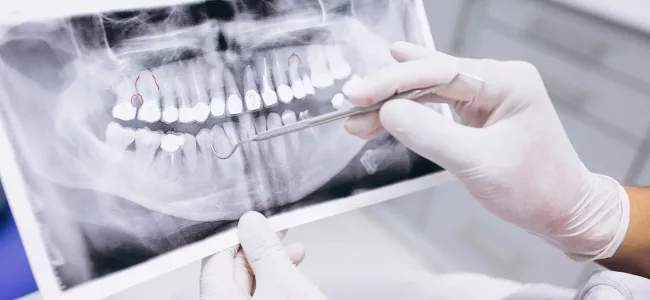If you’ve ever lost a permanent tooth or had a permanent tooth extracted, you probably had a prosthetic tooth put in its place. But if you lost a tooth and didn’t see a dental professional for follow-up care, you might need a bone graft. A bone graft is a procedure that takes a small sliver of bone, usually from elsewhere on your body, and implants it into your jaw. Over time, the sliver bonds with the rest of the jawbone, providing a solid foundation for a dental implant. Once your new dental implant is in place, this prevents further deterioration of the bone beneath the lost tooth. Your dentist is the best person to advise you on the benefits of bone grafts.
Four Types of Dental Bone Grafts
The type of dental bone graft you receive is based upon where the sliver of bone originates. If your dental professional uses bone from your own body, they’ll usually extract it from a different area of your jaw, from your tibia, or from your hip. This type of bone graft is called an ‘autograft.’ Most dentists prefer to use the autograft when possible. But you may have other options as well, including:
- Allograft: uses bone donated from another person or cadaver
- Xenograft: uses bone material from an animal, such as a pig or cow
- Alloplast: uses synthetic bone material
Regardless of which type of bone graft you receive, all will work well at helping to build up bone where your dentist needs to place your new prosthetic tooth. As a result, you’ll be left with an implant that’s firmly rooted in your jawbone, as it should be.
Why You Might Need a Dental Bone Graft
Aside from losing a tooth and not seeking immediate follow-up care, there may be other reasons your dental professional recommends a bone graft. For example, if you have an advanced form of periodontitis or gum disease, a bone graft may be necessary to help support areas of your jaw that have suffered damage.
Likewise, injury to your jaw or ongoing infections in your teeth and gums can also damage your jawbone. In these instances, a bone graft will help to keep further damage from occurring.
In many instances, bone grafts are performed for cosmetic reasons. Without a bone graft, issues such as injury, bone loss, and infection can cause your jawbone to deteriorate to the point that your facial structure begins to change. Your face may appear ‘shorter’ than before, and you may look older than your biological age.
Schedule a Consultation Today
If you would like more information on whether a bone graft could help resolve issues with your smile, find your local Ideal Dental office today to schedule an appointment. Our friendly and professional staff is always ready to sit down with you to discuss your oral health goals and offer sound solutions. We’ll set up an appointment that’s convenient for your busy schedule.
